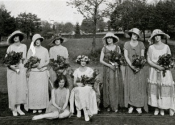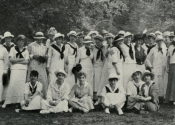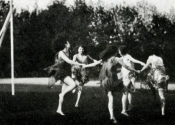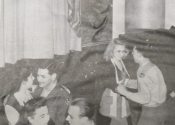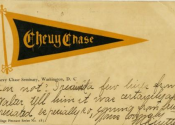Private Education for Girls and Young Women, 1903-1950
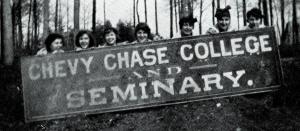 “The School for Girls”
“The School for Girls”
Chevy Chase College and Seminary, as it was called when it opened in 1903, was a senior high school that also offered two years of post-high school courses. Chevy Chase was often called a “finishing school,” but by the time of its closure in 1950, it was a fully accredited junior college offering the terminal associates degree to all its students, many of whom went on to four year colleges. The school's name was changed many times -- see the table below for a brief chronology of names used in different publications over the years. In 1940, Chevy Chase Junior College was incorporated as a Maryland non-profit institution, and in 1947, the Senior High School was discontinued. But to many of the residents of Chevy Chase, it was simply referred to as "the school for girls.”
Click here to view a PDF list of the various names over the years.
Chevy Chase residents were used to seeing the girls walking along Connecticut Avenue, and in his oral history, George Winchester Stone remembers attending some of the school plays and performances. Like other institutions along Connecticut Avenue, the school benefited from the streetcar line which connected it to downtown Washington, DC in just 35 minutes. Today the National 4-H Youth Conference Center occupies the campus, taking similar advantage of the suburban location so close to the nation’s capital.
The Chevy Chase Historical Society has a collection of materials documenting the history of Chevy Chase Junior College. Most of these artifacts were donated by Julie Rude Thomas. Her extensive collection includes college catalogs, yearbooks, brochures, scrapbooks, dance cards, postcards, and ephemera, and together they provide a view of education for elite girls and young women in the first half of the twentieth century.
If you, or someone you know, attended Chevy Chase Junior College, or you have photographs or other documents related to its history, we would love to see them. We still have many unanswered questions and perhaps you can help us learn more.
We invite you to explore this online exhibit by clicking through the links below, and we hope you’ll be inspired to search our website for additional materials or visit us at our Archive and Research Center. Click on images to view them in a larger format.


